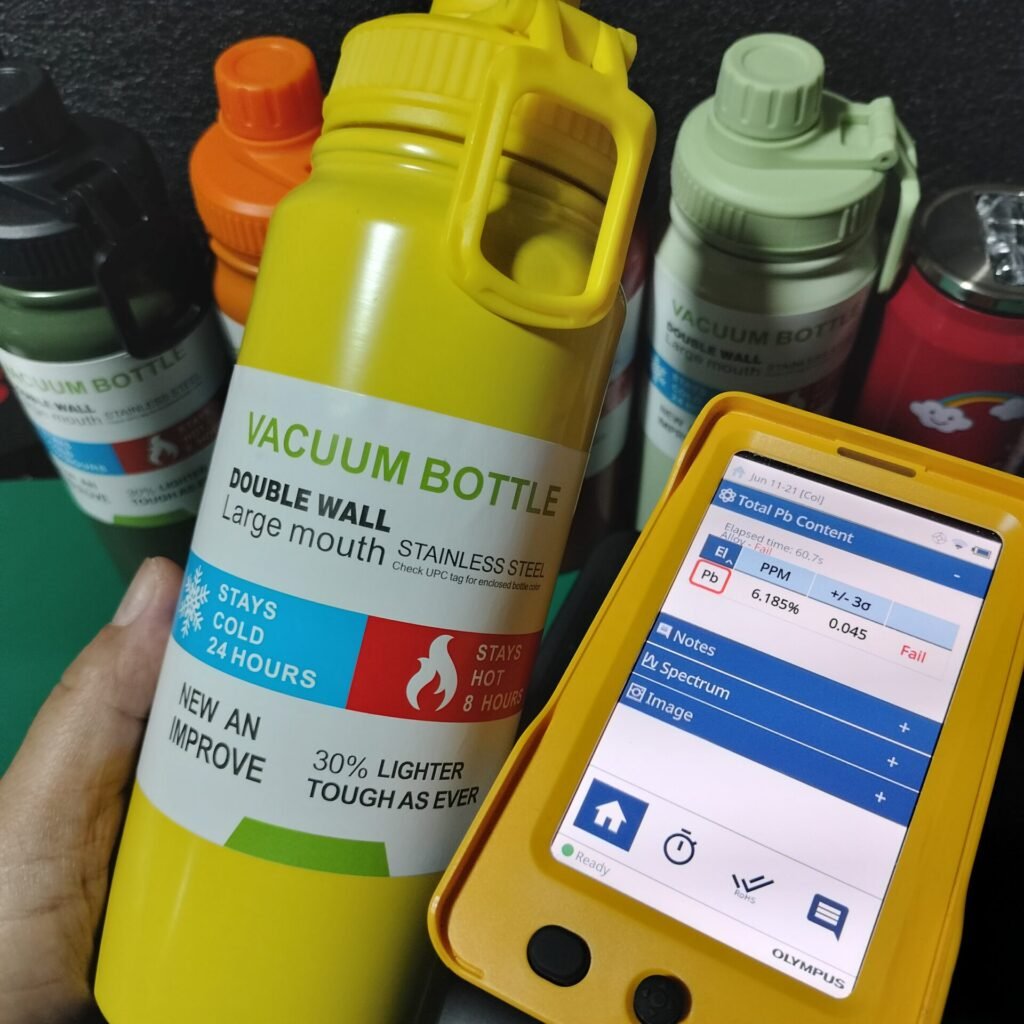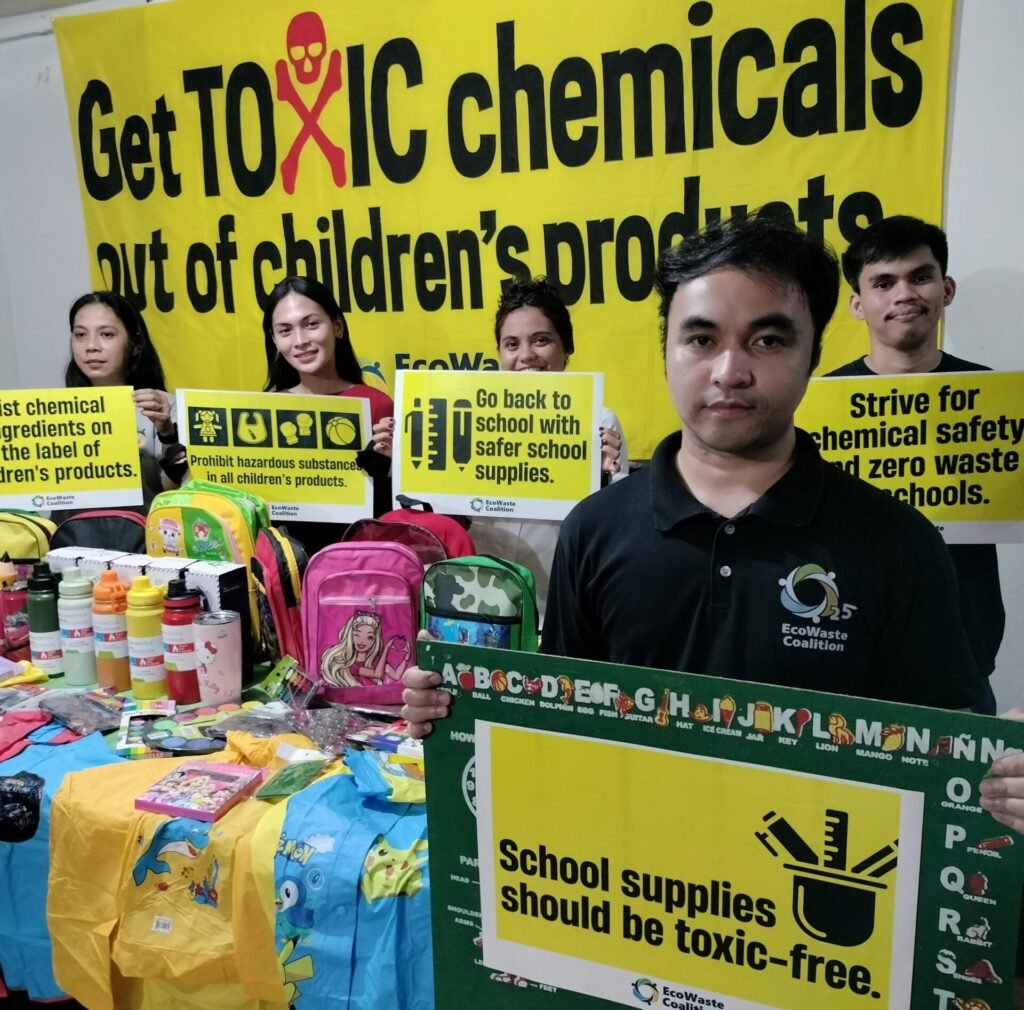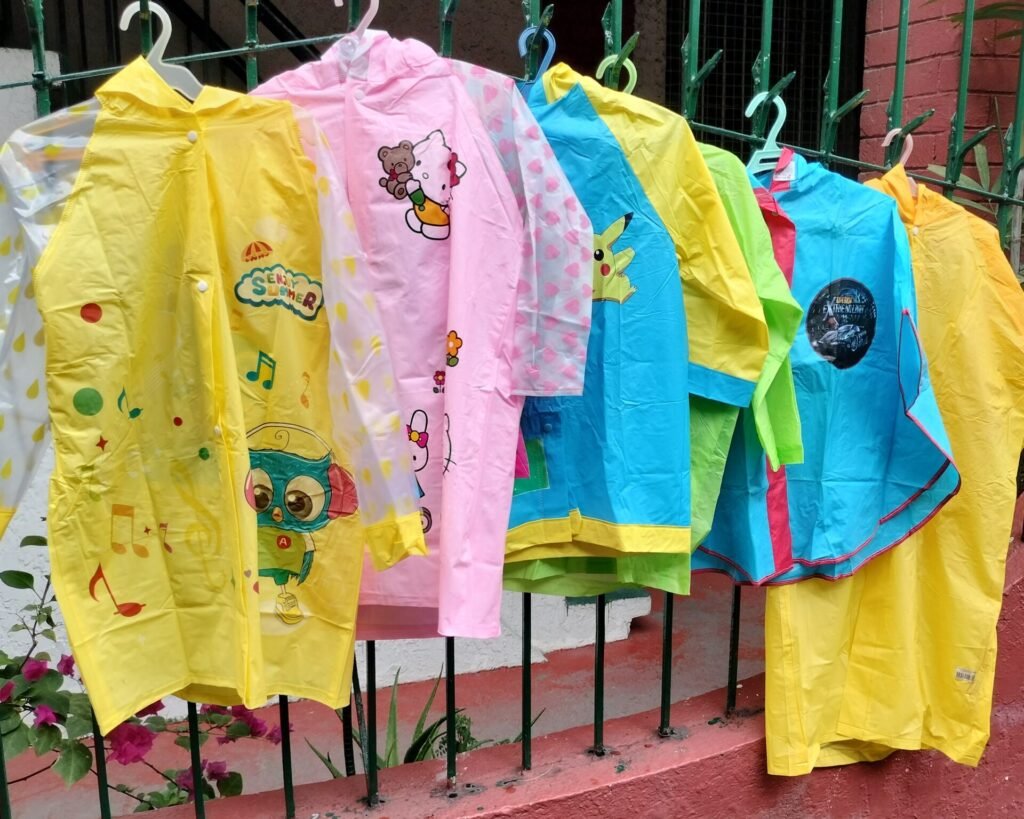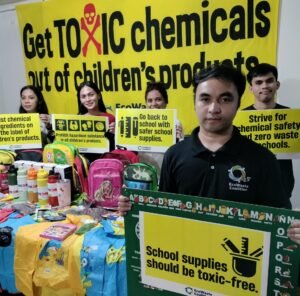
As the 19th Congress drew to a close, EcoWaste Coalition urged members of the next congress to prioritize the passage of a framework legislation that will hopefully set the stage for the promulgation of regulatory standards and measures banning hazardous chemicals in school supplies and other products marketed for children’s use.
“We appeal to our new batch of lawmakers at both houses of the 20th Congress to list the enactment of a safe and non-toxic children’s product law among their top priorities,” said Aileen Lucero, National Coordinator, EcoWaste Coalition. “For our children’s health and future, we need a comprehensive ban on dangerous chemicals used in the production of children’s products, and we need to make chemicals in products labeling mandatory to guide consumers in making informed choices.”

“We seek legislative champions from all parties who will see the process through the end and get a strong law passed for the health and well-being of every Filipino child,” she emphasized.
“The sale of children’s products with hidden hazardous chemicals is deeply concerning. We need to enact laws and regulations that will protect them from being exposed to such chemicals, which can put their health and development at risk,” said Dr. Geminn Louis Apostol, environmental health specialist, Ateneo School of Medicine and Public Health – Center for Research and Innovation (ACRI). “Children are more vulnerable to toxic exposures because of their higher intake of air, water and food relative to their body weight, their usual hand-mouth and hand-object behaviors, and because their bodily systems and defenses are still developing.”

The EcoWaste Coalition proposed the adoption of a framework law to affirm the state’s policy and commitment to uphold children’s right to be adequately protected against hazardous chemicals lurking in products created for their use and enjoyment, and to set the objectives, targets and mechanisms for achieving them.
The results of its latest test buys targeting an assortment of back-to-school essentials from backpacks to raincoats prompted the EcoWaste Coalition to call for a legislative response to address the threats posed by hazardous chemicals in school supplies and other children’s products, as well as to ensure that products are properly tested and labeled before being peddled in the marketplace.

From May 31 to June 5, the group bought assorted school supplies from general merchandise stores located in Caloocan, Makati, Mandaluyong, Manila, Pasay, Pasig, Quezon and Taguig Cities. It then subjected the purchased items to X-Ray Fluorescence (XRF) screening, which can identify and measure elements without destroying the sample.
Of the 95 items bought and analyzed, 34 were found to contain certain chemicals of concern, including lead (a potent neurotoxin) and cadmium (a cancer-causing substance). The non-detection of hazardous chemicals in many of the items is proof that safer children’s products posing no chemical risks can be produced.
- Seven of the 10 stainless steel tumblers were found coated with leaded paints with levels ranging from 1,807 parts per million (ppm) to 61,850 ppm, way above the 90 ppm legal limit. Five of these highly-leaded tumblers were obtained from sidewalk vendors. None of the tumblers provided complete labeling information and there was no precautionary warning about lead paint.
- Seven of the 14 backpacks screened positive for cadmium and/or lead. An unbranded kiddie backpack with a Princess cartoon character has 1,113 ppm lead, while an unbranded module bag has 238 ppm cadmium and 599 ppm lead.
- Six of the eight raincoats made of polyvinyl chloride (PVC) plastic contained cadmium up to 531 ppm. A yellow raincoat was found to contain 439 ppm cadmium and 1,316 ppm lead.
- Additionally, 10 other products were made of PVC plastic (or a total of 18). PVC plastic contains numerous chemical additives, including plasticizers called phthalates that are used to soften PVC plastic (costly laboratory tests are required for phthalate analysis).
- Also, the black plastic palette of 13 out of 20 water colors were found laden with up to 8,480 ppm bromine indicating the probable use of recycled plastic from electronic waste with brominated flame retardant chemicals (the plastic casings of TVs and other e-waste are usually black, yielding black plastic when recycled).
- Also, 10 crayon products sampled were not labeled as “non-toxic.” Crayons, according to the Department of Trade and Industry (DTI) must have this marking aside from the other required labeling information.
- For children’s health and safety, the EcoWaste Coalition urged consumers to consider these buying tips:
- 1. Read the product label carefully. Avoid poorly labelled products.
- 2. Avoid PVC plastic school supplies as much as possible.
- 3. If you have already bought products with strong chemical odor such as those made of PVC plastic, place them outside for a while until the smell is lessened.
- 4. Pick “phthalate free” or “PVC-free” erasers. Avoid scented and food-shaped erasers.
- 5. Choose crayons and other art materials with a “non-toxic” mark.
- 6. Opt for plain stainless steel water bottles, and avoid painted ones unless certified “lead safe.”
“No child should be exposed to harmful chemicals and products that can put their health and development at risk,” the EcoWaste Coalition concluded.



